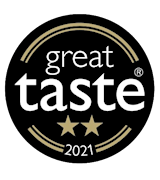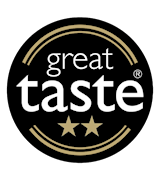Best Asian Herbal Infusion Types
MAIN INGREDIENTS
Mugicha is a Japanese name for barley tea—an infusion made by steeping roasted barley grains in hot or cold water. Technically, barley tea is a tisane, and nowadays, it is often made by using teabags consisting of roasted and ground barley.
The drink has ancient origins and is enjoyed in many Asian countries. When brewed, barley tea has a light brown color and a savor, nutty and earthy flavor. It can be sweetened to preference, while the chilled, summer version is often served over ice.
Yuja-cha is a Korean citrus infusion that is mostly enjoyed during winter. It is made with yuya—a lemon-like citrus fruit native to China that was brought to South Korea during Tang dynasty. The tea can be prepared by mixing fresh sliced fruit with sugar and then combining it with warm water.
The other way is to make a fruit preserve (yuja-cheong), which usually consists of sliced yuya, honey or sugar, and water. The tea is then prepared by dissolving the preserve in water. This warming tea should be enjoyed warm and is often claimed to be a soothing health remedy.
Omija-cha is a Korean infusion made with omija—five-flavor berry. Also known as schisandra or magnolia berry, these small red berries are dried before they are used to make omija tea. The berries can be boiled in hot water, which will bring out bitter flavors, but traditionally they are merely steeped in cold water.
The tea is usually sweetened with sugar and honey, and it can be enjoyed warm or cold. The berries will give the drink its distinctive red hue, and they will also provide five omija flavors—hence the name of the fruit—which include saltiness, sweetness, sourness, bitterness, and pungency.
Yulmu-cha is a Korean tea that is made with yulmu—the seeds that are gathered from yulmu plant (also known as Job’s tears). The seeds are roasted and ground into a powder, which is then dissolved in warm water to make the tea.
Optionally, yulmu powder can also incorporate other seeds, grains, or nuts. The tea is opaque and creamy with a distinctive nutty flavor. It is usually available as a pre-packed powdered mix, and it is sometimes sold from vending machines.
Daechu-cha is a South Korean tea made from jujubes. This tea can be made from dried jujubes, which are boiled in water, or with a jujube preserve, which is diluted in warm water. The tea is usually dark red or brown and is often praised for its health properties.
When served, daechu-cha is usually garnished with pine nuts.
MAIN INGREDIENTS
Although it is often labeled as tea, sobacha is an infusion or a tisane made with roasted barley. The blend can include grains, leaves, or flowers. Apart from Japan, the drink is popular in several Asian countries, including China (kuqiaocha) and South Korea (memil-cha).
To prepare it, roasted kernels are simply steeped in hot or cold water. Alternatively, it can be made with teabags. The resulting drink has a yellow or a light brown hue, with an earthy and nutty flavor, subtle bitterness, and hints of sweetness. Buckwheat tea is a nutritious drink, and many believe that it has numerous health benefits.
Lohusa şerbeti is a type of non-alcoholic beverage that hails from Turkey. It is made by boiling lohusa sugar, granulated sugar, water, cloves, and cinnamon. Lohusa sugar is a specific type of sugar that is sold in blocks. It has a distinctive pink-red color, and it helps the drink attain its unique red hue.
The name translates as postpartum sherbet, and as it is evident, it is usually prepared for women after giving birth. Traditionally, it is also offered to guests who come to visit during the same period.
Sakurayu is an infusion made with preserved cherry blossom. When brewed, the petals open and float on top, while the brew attains a pale pink hue and a subtly sweet and mildly salty flavor. If the tea is made with salt-preserved blossoms, they are usually first steeped in water to remove the excess salt.
Sakurayu is traditionally enjoyed on special occasions, such as engagements and weddings, as it symbolizes new beginnings.
Often dubbed as dried lime tea, noomi basra is an infusion made with dried limes that are crushed and then slowly simmered in water. The seeds are typically removed because they tend to add too much bitterness. This aromatic infusion typically has an appealing amber color and a slightly sour flavor.
Sometimes the beverage can include saffron or cardamom, and it can be sweetened, with sugar or honey, according to taste. Dried lime tea is usually associated with Iraq. It can be enjoyed hot or well-chilled.
Qishr is a traditional Yemeni infusion made with coffee husks, ginger, sugar, and sometimes cinnamon. In the past, qishr was used by Muslim dervishes as a part of religious ceremonies, but nowadays it is considered a universal drink which is consumed instead of coffee because it is less expensive.
In Yemen, qishr is traditionally consumed hot and sweetened, and it is typically served to guests as a sign of hospitality.
Best Asian Herbal Infusion Producers
Vahdam Teas is a premium brand that brings the finest teas from India directly to your cup. Known for their commitment to quality, sustainability, and innovation, Vahdam offers a wide selection of handpicked teas that range from classic black and green teas to vibrant herbal infusions and chai blends.
Their teas are sourced from the top tea estates in India, ensuring freshness and exceptional flavor. Vahdam also places a strong emphasis on ethical sourcing, fair trade practices, and environmental responsibility, making every cup a mindful choice.
AWARDS

Great Taste Awards - 2 stars
2022, 2021
BEST Vahdam Teas and Herbal Infusions
BOH Tea was established in 1929 and has since become one of the largest and most recognized tea brands in Malaysia. The company has a strong heritage, with tea being grown in the cool, high-altitude Cameron Highlands region of Malaysia, known for its ideal climate for tea cultivation.
BOH Tea offers a wide variety of teas, including: black teas, green teas, herbal teas and specialty teas. BOH Tea prides itself on its sustainable farming practices. The company focuses on producing high-quality, organic teas while preserving the natural environment of the Cameron Highlands.
Best Asian Herbal Infusions
Vahdam Teas offers a Turmeric Spice Herbal Tea that is known for its blend of premium turmeric root combined with other natural spices. This herbal tea is caffeine-free and is often praised for its potential health benefits, including anti-inflammatory properties due to the curcumin content in turmeric.
The tea is typically enjoyed for its warm, slightly earthy flavor with hints of spice, making it a comforting beverage choice. The brand emphasizes sustainability and ethical sourcing, ensuring that their teas are produced in a way that supports both the environment and the farmers.
AWARDS

Great Taste Awards - 2 stars
2022
TasteAtlas food rankings are based on the ratings of the TasteAtlas audience, with a series of mechanisms that recognize real users and that ignore bot, nationalist or local patriotic ratings, and give additional value to the ratings of users that the system recognizes as knowledgeable. TasteAtlas Rankings should not be seen as the final global conclusion about food. Their purpose is to promote excellent local foods, instill pride in traditional dishes, and arouse curiosity about dishes you haven’t tried.



